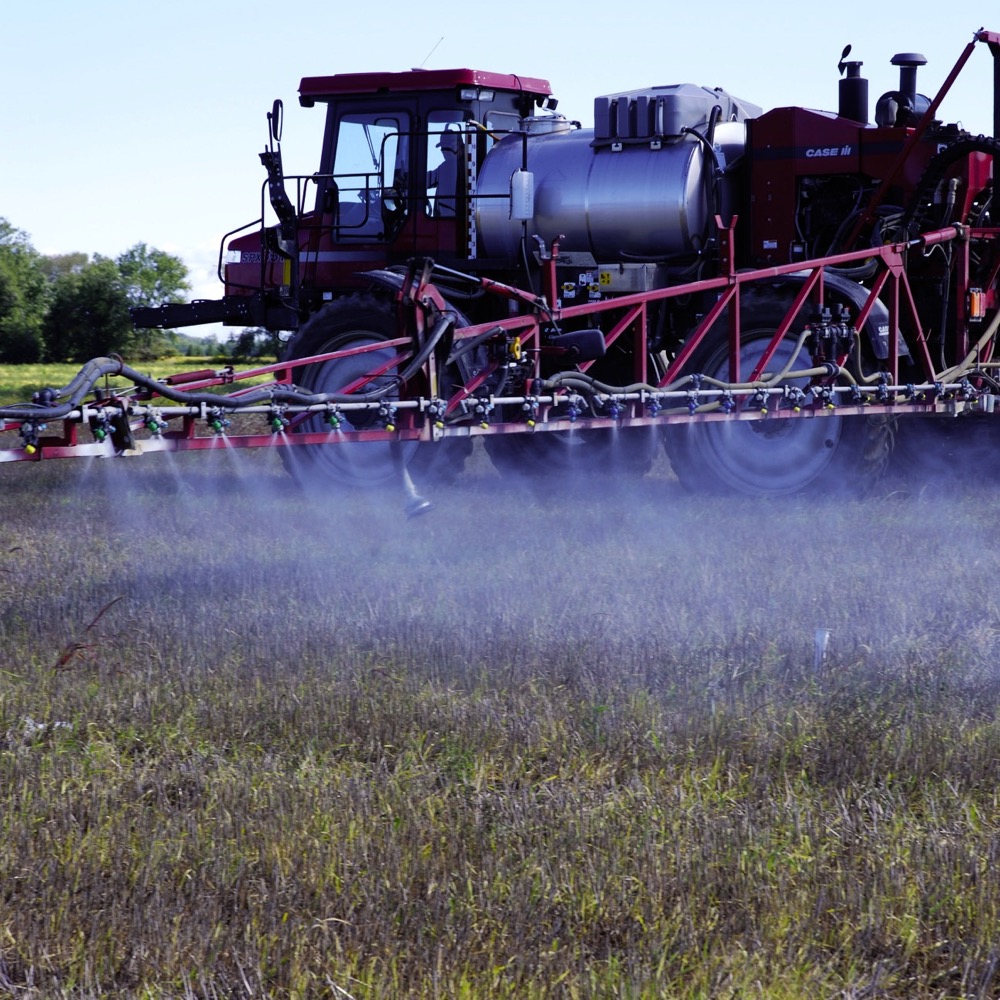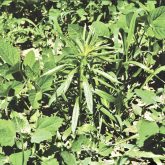What’s in a name? Plenty — especially when it comes to reducing off-target movement of spray applications.
The buzz around the launch of Xtend soybeans in 2017 is creating a new level of scrutiny on spray applications. Like it or not, consumers and governments are watching, and increased diligence is warranted.
Re-enter the InterLock system. First launched more than 10 years ago in the U.S., it was introduced in Canada around 2008, but its growth at that time was limited for several reasons. First and foremost, it’s an adjuvant, which means it doesn’t share the same demand here in Canada. The adjuvant market in the U.S. is much more robust, while north of the border adjuvants are often mistaken for surfactants.
Read Also

Could crop sharing be a viable option for your farm?
Crop sharing could be a good option for young and beginning farmers.
Dave Van Dam is the director of proprietary pesticides for WinField United in the U.S., but has the perspective that comes from attending the universities of Guelph and Manitoba. He manages the adjuvant portfolio for WinField United in Canada, and is well aware of the differences between the U.S. and Canadian reliance on adjuvants and other agents.
“We would define the adjuvant market with various subgroups, where you have surfactants that help a product stick and spread on the leaf surface,” says Van Dam. “Then you would also have a class of water conditioners, with ammonium sulphate-based products making up the largest number of those, and they prevent the water from tying up the active ingredient.”
Then there are other products like oils that can act as a type of surfactant yet they can also act as a delivery system. Many of the grass herbicides need an oil-based product to get through the waxy layer on a weed leaf’s surface. Oils can be labelled as a surfactant or occupy a group on their own. There are also acidifiers, which alter the pH in a solution and can help the product work in its own particular environment.
Where the InterLock system fits into these classifications is as a drift control/deposition agent. It’s an oil-derived adjuvant that forms droplets coming out of the nozzles at the optimum size so they’ll be less likely to drift or move off-target.
This produces a more uniform droplet pattern that helps droplets to move through the canopy for greater penetration and coverage.
Confusion
Part of the confusion with the terms comes from the levels of regulation. Van Dam notes that in the U.S., adjuvants are not regulated by the EPA. As long as the adjuvant does not contain any active ingredient and all of the inert ingredients that are in the adjuvant are registered as inert and without any adverse effects to human health or the environment, then it is not regulated.
In Canada, the regulations governing the use of adjuvants are stricter. Here, adjuvants are divided into two classes: activators and utility modifiers. Water conditioners and drift-control products fall under the utility modifiers heading, and as such do not require efficacy data for registration by the Pest Management Regulatory Agency (PMRA). An activator, on the other hand, includes chemical compounds that are intended to improve efficacy or enhance biological performance of a product by modifying or enhancing its physical or chemical characteristics, and they are subject to Pest Control Products Act regulations.
“That’s why we call the InterLock system an adjuvant,” says Van Dam. “It’s a drift and deposition adjuvant. The use rate for it is two to four fluid ounces (59 to 118 millilitres) per acre, which is very minimal compared to when you hear ‘crop oil concentrates,’ which are much higher.”
Aside from differences in regulations and specific terminology, marketing is another factor that has affected uptake in Canada versus the U.S. Sales of the InterLock system in the U.S. during the past 10 years have been steady and considerable, to the point that by 2015, it was being used on 67 million acres, the second-most utilized product next to Monsanto’s PowerMax.
In Canada, meanwhile, InterLock has been involved in a number of mergers and acquisitions, which has reduced its market focus.
“Now that we’ve established ourselves in the U.S., we’re looking for international growth opportunities,” says Van Dam. “The merger with United Suppliers brings with it the United Suppliers Canada group in Western Canada, and we’re working more closely with the AgroMart Group in Ontario and La Co-op Fédérée in Quebec.”
The climate has also changed with the arrival of XtendiMax and Engenia, and at a later date, Enlist. Those are driving concerns about drift and off-target movement of dicamba and 2,4-D (with the Enlist system).
“Right now we’re getting a lot more focus and a lot more questions about off-target movement and how to prevent that,” adds Van Dam. “You’re hearing a lot more about nozzle selections as well as drift control agents that can be added to the tanks to help prevent that. Some of it is government regulatory, some of it is consumer awareness (and the bee and neonic issue in particular), and frankly some of it is within the agricultural environment itself, where neighbours are frustrated with damaged crops.”
Van Dam agrees that much depends on selecting the right nozzle with the right active ingredient and right adjuvant, and all under the right field conditions. WinField United has relied on specialists such as Dr. Tom Wolf of Agrimetrix Research and Training, and Jason Deveau of the Ontario Ministry of Agriculture, Food and Rural Affairs (OMAFRA) for their insights on the matter.
“We do a lot of spray table demonstrations,” says Van Dam. “That’s to show the total spray application solution and it’s the right nozzle with the right adjuvant in that combination.”

Here at home
In 2008, Lakeside Grain and Feed Limited in Forest, Ont., held a field demonstration to showcase the InterLock’s capabilities. Wind speeds were monitored, water-sensitive papers were laid out and the product was widely touted as a success in reducing off-target movement. And then, as Van Dam describes it, the system went largely unnoticed in Canada.
Yet according to Duane Winter, a sprayer operator and certified crop adviser (CCA) with Lakeside, there are at least a dozen InterLock users that he works with, and they use the system when the circumstances require it.
“It helps reduce off-target or bad experiences,” says Winter. “You don’t always need it… but it’s one more tool that we have to reduce the possibility of off-target damage.”

Winter echoes Van Dam’s observation that the climate surrounding off-target movement has certainly changed. “As our society seems to evolve from a liability standpoint, (change) is always a consideration,” he says. “And it’s probably going to become a bigger consideration in the future, with more environmental concerns, growth in the regulatory industry — they are going to be watching us closer and closer.”
In the case of dicamba-tolerant soybeans the labels are explicit, and they will be for 2,4-D-tolerant soybeans as well, Winter says, and from a liability perspective, the companies involved will not stand behind any or all alterations or deviations from those label rates.
“I know they are looking into drift-control adjuvants, just to see if it’s going to affect the volatility — and it definitely helps with controlling fines in your spray pattern when you’re out in the field,” he adds. “How it affects the volatility — because the companies invest a lot of money on these formulations trying to reduce volatility — is the question. It’s so it doesn’t vaporize off as easily as the old products did, and that’s why they won’t let you use ammonium sulphate (AMS), because that really impairs that new bond that they’re trying to use.”
The chemical companies are still examining additives to see if they adversely affect that volatility-reduction capability. Winter says if it doesn’t have an adverse impact on the formulation and its intent, he believes it could be a positive addition to the so-called “tool box.”
From Winter’s perspective, Lakeside has done a fair amount of promotion within its own organization.
“We’re evolving and we’re improving the tools, and the InterLock is just one more evolutionary tool,” says Winter. “It could be and should be promoted a little better.”
















